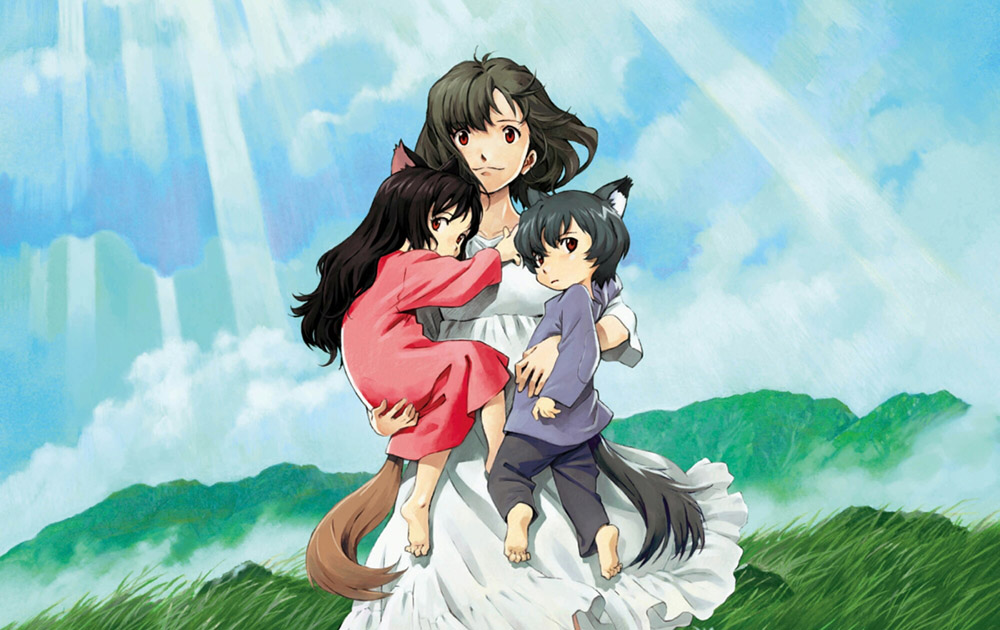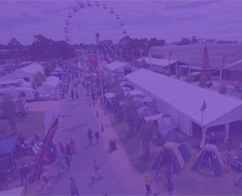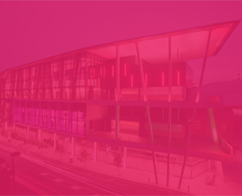
Sydney
June 21-22, 2025
Sydney Showground Olympic Park



Written by Cristian Stanic
Hayao Miyazaki, Makoto Shinkai, Mamoru Oiishi, Satoshi Kon; these are a handful of prolific anime directors whose names and reputations are acknowledged well beyond the “hardcore anime fan” demographic. Their work has been able to break past the difficult stigma anime sometimes has against it, a problem many of us will be aware of if you’ve ever tried to introduce someone to an anime you like… One director who deserves to be noted up there with these other titans of the medium is Mamoru Hosoda.
Now, if you really like anime, you’re no doubt familiar with his work, but he hasn’t really achieved the same status (yet) as some of the other directors named above. Hosoda has plenty of great films, but not really a Your Name, Ghost In The Shell or Perfect Blue.
That being said, his newest film, Mirai Of The Future, is coming to cinemas this month. Before his latest film releases and blows us all away, we’d like to look at his previous works and see what makes Mamoru Hosoda so great.
Hosoda’s preferred style of is definitely family-comedy/drama. Now comedy/drama is a very popular genre in anime films, but most of the popular ones, particularly Makoto Shinkai’s films like Your Name, and Garden Of Words, focus on young romantic relationships, whereas Hosoda likes to look at the family dynamic, and a how family can lift people up, change them for the better, and bring people together. He shows us not only how important our family is, and how we have to cherish them, but that our family is also what you make of it, and it can extend well beyond blood relatives.
Hosoda’s directorial film debut was Digimon: The Movie, kinda, if you count the Saban mash-up of three different Digimon short films into one “feature film” (can you tell they were trying really hard to compete with certain ‘Pocket Monsters?’). In reality, two of Hosoda’s short films made up the majority of the film. They’re two fun and hilarious shorts, and serve as excellent supplementary pieces to the Digimon TV show, but it’s clear that Hosoda had more potential to be tapped after these.
The family roots were still there, particularly in the way Tai and the DigiDestined care about their Digimon, but it’s mostly just a goofy comedy with some great action and surprisingly nice animation. This was the first time Hosoda’s divisive art style was introduced in a mainstream way, and it didn’t go over well with many people, especially since it looked nothing like the TV show. People couldn’t appreciate the simple designs, and confused his animation-friendly style for “bad art.” In reality, the film has gorgeously animated fight scenes, and even the talking heads scenes don’t shy away from meticulous detail.
His characters are always bouncing around, making really expressive faces, and they’re always just doing something in every scene. His art style has a lot of characters with simple features, and round, “blobby” faces, that lends itself well to being animated really easily. He uses washed-out colours, and never uses shiny highlights. All these things serve to give the works a more realistic and grounded feel. The stories are crazy, but the art style makes them look so mundane and, ‘of our world,’ that you can’t help but laugh at the expert juxtaposition.
The second film he worked on was One Piece Film 6: Baron Omatsuri And The Secret Island. Toei let him use his own signature animation style for this film, and while it is very nicely animated, there’s not much to say about the film as a whole. The art style was divisive again, and featured more of the same from Digimon. People were impressed by the use of CG to create cool-looking creatures, something Hosoda seems to be a fan of.
Now we’re getting into the proper bulk of Hosoda’s oeuvre, where the director finally got to come into his own! The Girl Who Leapt Through Time is considered a modern classic by those who know it, and it’s not hard to see why. It is loosely based on a 1967 novel of the same name, but only in premise. This is where Hosoda’s best traits start shining through.
The quietness of summer-boredom, and the lethargy of the students, the everyday day-to-day life of school, emphasised by the humming of cicadas (something anime fans will know well), long cuts of classrooms, playing three-person catch, and Hosoda’s favourite cloud formations (we’ve done the research, he uses the same cloud formation in almost all of his films, you can check, we’re not crazy), and punctuated by the silliness of our main character, a high-schooler goofing around with time travel.
It’s fun, like all his films, and when it gets heavy at the end, it feels earned, and you feel like the characters have really been changed by the events. The protagonist, Makoto, learns that her fun and frivolousness with this power has consequences on the people she loves.
Summer Wars was his next film, one that really doubles down on the family motif. At this point, you’ll start to notice some recurring features, visually and thematically. Hosoda has a strong affinity for rural towns, maybe it’s the idea of contrasting the quiet laziness of it with a manic main character and story, but he likes them. The “white void world” shows up here, which is INCREDIBLY similar to the ones in Digimon and Girl Who Leapt Through Time. You’ll know what we mean if you watch them. This film focuses on a young man who has to pretend to be a girl’s boyfriend when she goes home to visit her family.
Along the way, he learns to care for the eccentric family as his own, and they come to feel the same about him, all set to a story about the Internet being destroyed by an evil military virus, created by one of the family members, and accidentally unleashed by him. Sounds weird right? It’s even weirder that he somehow manages to make these two plots work so seamlessly together, it’s so good, you won’t even stop to think about how little Hosoda actually understands the Internet. (You cannot ‘flood’ the Internet with ‘digital water.’)
Extremely hot take: Wolf Children is Mamoru Hosoda’s magnum opus. The best film he has ever made. It’s a story of motherhood, being thrust upon a young woman who isn’t ready for for the responsibility, but decides that she can’t ignore it. She loves her kids, and she’ll do anything to make a life for them. All children are difficult, but her children are werewolves, and after her partner dies, she’s forced to care for the pups by herself. She has to drop out of university, get several jobs to look after them, keep their werewolf side a secret from the world, and learn how to raise wolves as well as children. Our description can do no justice to how beautiful this story actually is. As they grow up, this exhausted, grieving, but unstoppable mother is caught between the kids, as they choose between whether to embrace their human side, or their wolf side. At once it’s a story of kids growing up and choosing their path in life, leaving the nest, and a love letter to mothers everywhere.
Here’s a far less scalding take to cool you down off that last one: Boy And The Beast is a little disappointing. That’s not to say it’s not good, because it is really good, but all of Hosoda’s films represented an amazing upward trend in quality, a hot streak broken by Boy And The Beast. After pulling off a brilliant story of motherhood, Hosoda decided to give fatherhood a go this time around. This time though, it’s from the child’s perspective. Our main boy Kyu ends up in a fantastical alternate world filled with warrior animals, and is taken in by the rowdy Kumatetsu.
The pair has a standoffish relationship, but they come to respect one another, and Kyu sees him as a father figure. When Kyu accidentally goes back to the human world though, he’s reunited with his real father. What follows is the young man’s choice between the two worlds he’s torn between, represented by his father figures. It’s touching, but never quite reaches the emotional heights of Wolf Children, and the big flashy battle finale isn’t as effective as the simple moment from Wolf Children where SPOILER ALERT Hana simply has to say goodbye to her son and let him follow his own path.
So what can we expect from Mirai Of The Future? Well, from the trailers, it looks kinda like a ‘Hosoda’s Greatest Hits’ film, and we can dig that. We’ve got a time travelling older-sister, with a half-wolf looking child, in a fantasy world. We are seriously excited for this film, but not without reservations, especially since this looks like it could be a highlights reel of his greatest tropes, when every previous film has been so unique and different from the one before it. The film is set to release in Japan on July 20 this year, and whenever the Australian date gets announced, you can bet we’ll be there!
Lead image: Wolf Children






